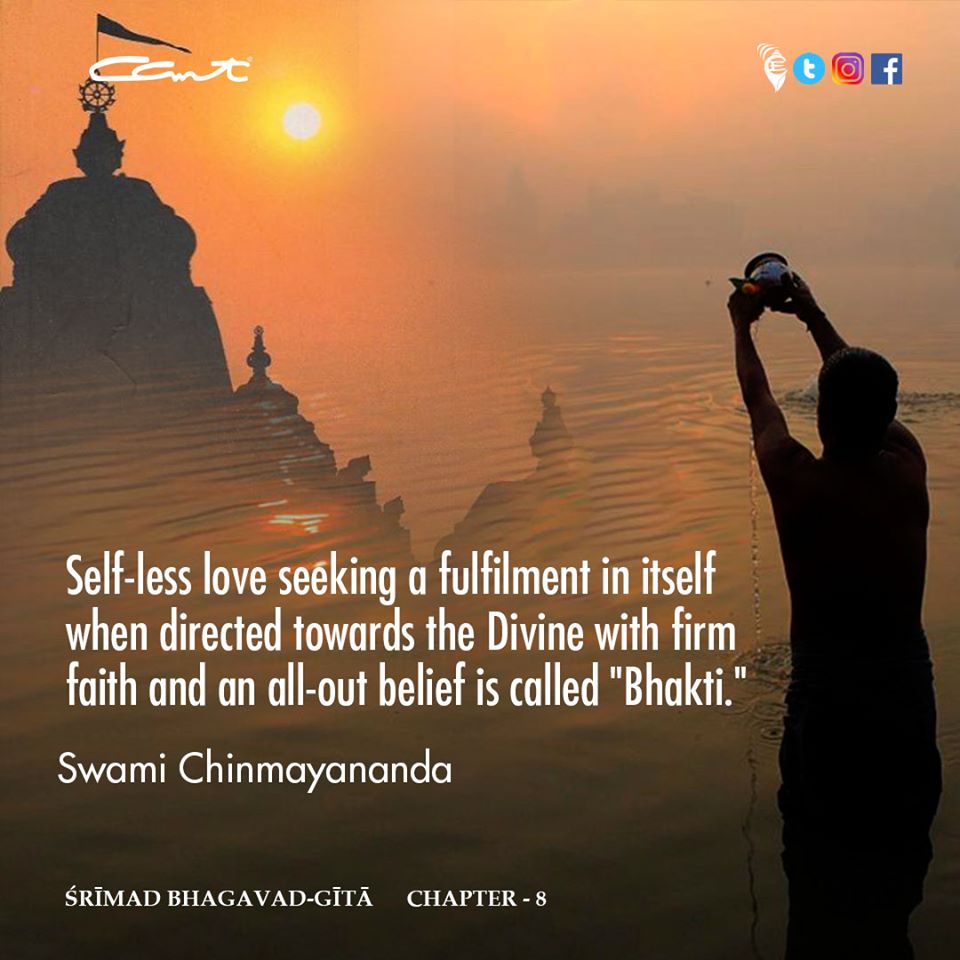The Essence of the Gospel of the Bhagavad Gita : 7. Swami Krishnananda
=======================================================================
--------------------------------------------------------------------------------------------------------------------------
26/11/2019.
(Spoken at a conference in Delhi on December 27, 1973.)
Post - 7.
-------------------------------------------------------------------------------------------------------------------------
The army that Duryodhana chose was of no help to him. The very sight of Krishna was enough to paralyse their entire strength. The very look that Krishna cast upon the Kaurava forces withdrew half of their strength.
Such was the hypnotising glance that he cast upon them because he was a magnet sitting there, weighty like the earth, immovable like a rock, knowing everything. Ishvara-tattva guiding the destinies of man was seated in the chariot of Arjuna.
This Ishvara-tattvam is also located in the very same chariot of our own bodies here.
The Mahabharata epic is nothing but an exposition of the battle of human life.
It is an answer given to every question that is raised by our minds.
It is a solution to every problem that we may have to face in our lives. Arjuna and Krishna, the historical figures that strode the battlefield of the Mahabharata in Kurukshetra, are symbolically represented by the very same Ishvara-tattvam and jiva-tattvam in our bodies.
We as the individual personalities are Arjuna, and there is an invisible power within us directing our destinies. That is Ishvara.
This body is the chariot. Life is itself the Mahabharata field. All that we see in front of us are the Kauravas, and the virtuous forces within us are the Pandavas.
The sense of righteousness is Yudhisthira. Ability and dexterity in action is Arjuna. Strength and might and adamantine will is Bhima. And the universal guiding light, which is God, is Bhagavan Sri Krishna within us.
All the weaknesses of human nature are the Kauravas within us. The jiva is wedded to the five senses, like Draupadi. All these symbolic representations tell us where we stand and how we can act.
We have everything with us except knowledge, even as everything was with Duryodhana except the grace of Bhagavan Sri Krishna. He represented effort without divine grace.
Therefore, he failed in his attempt. Duryodhana was not wanting in effort.
His army was much larger than the force of the Pandavas, and yet the quantity of Duryodhana was not able to face the quality that was the Pandavas. This quality of virtue and righteousness was receiving perpetual sustenance from the presence of Sri Krishna, God manifest in form.
The Pandavas represent virtue, the Kauravas represent the opposite of it; and divine grace sheds its light only on virtue.
What is virtue? What is righteousness?
It is the urge within ourselves, the tendency in us to walk the path that is in consonance with the law of God. Opposed to it is vice, or evil.
That which draws us towards the centre of the universe is virtue. That which urges us backward and drives us away from the centre is evil.
To be continued ....
=======================================================================
--------------------------------------------------------------------------------------------------------------------------
26/11/2019.
(Spoken at a conference in Delhi on December 27, 1973.)
Post - 7.
-------------------------------------------------------------------------------------------------------------------------
The army that Duryodhana chose was of no help to him. The very sight of Krishna was enough to paralyse their entire strength. The very look that Krishna cast upon the Kaurava forces withdrew half of their strength.
Such was the hypnotising glance that he cast upon them because he was a magnet sitting there, weighty like the earth, immovable like a rock, knowing everything. Ishvara-tattva guiding the destinies of man was seated in the chariot of Arjuna.
This Ishvara-tattvam is also located in the very same chariot of our own bodies here.
The Mahabharata epic is nothing but an exposition of the battle of human life.
It is an answer given to every question that is raised by our minds.
It is a solution to every problem that we may have to face in our lives. Arjuna and Krishna, the historical figures that strode the battlefield of the Mahabharata in Kurukshetra, are symbolically represented by the very same Ishvara-tattvam and jiva-tattvam in our bodies.
We as the individual personalities are Arjuna, and there is an invisible power within us directing our destinies. That is Ishvara.
This body is the chariot. Life is itself the Mahabharata field. All that we see in front of us are the Kauravas, and the virtuous forces within us are the Pandavas.
The sense of righteousness is Yudhisthira. Ability and dexterity in action is Arjuna. Strength and might and adamantine will is Bhima. And the universal guiding light, which is God, is Bhagavan Sri Krishna within us.
All the weaknesses of human nature are the Kauravas within us. The jiva is wedded to the five senses, like Draupadi. All these symbolic representations tell us where we stand and how we can act.
We have everything with us except knowledge, even as everything was with Duryodhana except the grace of Bhagavan Sri Krishna. He represented effort without divine grace.
Therefore, he failed in his attempt. Duryodhana was not wanting in effort.
His army was much larger than the force of the Pandavas, and yet the quantity of Duryodhana was not able to face the quality that was the Pandavas. This quality of virtue and righteousness was receiving perpetual sustenance from the presence of Sri Krishna, God manifest in form.
The Pandavas represent virtue, the Kauravas represent the opposite of it; and divine grace sheds its light only on virtue.
What is virtue? What is righteousness?
It is the urge within ourselves, the tendency in us to walk the path that is in consonance with the law of God. Opposed to it is vice, or evil.
That which draws us towards the centre of the universe is virtue. That which urges us backward and drives us away from the centre is evil.
To be continued ....
=======================================================================





Comments
Post a Comment